Hyundai Tucson vs Renault Austral – Hvilken model klarer sig bedst i hverdagen?
To biler, én duel: Hyundai Tucson møder Renault Austral.
Hvem imponerer mest på ydeevne, forbrug og pris–ydeevne? Find ud af det nu!
Battle of the SUVs: Hyundai Tucson vs Renault Austral
In the ever-competitive SUV market, two standout contenders are grabbing the limelight: the Hyundai Tucson and the Renault Austral. As both make their marks in the 2024 lineup, these SUVs are much more than just family vehicles; they are technologically advanced machines ready to redefine the driving experience. Let's dive into a detailed comparison of these two impressive vehicles.
Engine Performance and Efficiency
Both the Hyundai Tucson and Renault Austral offer a variety of engine options, catering to the diverse demands of the modern driver. The Tucson is particularly versatile with its wide range of powertrains, including Diesel MHEV, Petrol MHEV, Full Hybrid, and Plugin Hybrid options. It boasts power figures reaching up to 252 HP, coupled with all-wheel drive capabilities on select variants, a clear advantage for those seeking power and traction.
In contrast, the Renault Austral focuses on petrol-driven efficiency with its Petrol MHEV and Full Hybrid systems. It delivers a maximum of 200 HP, which, while slightly less powerful than the Tucson's top offerings, is backed by an impressive consumption rate as low as 4.7 L/100 km for the Full Hybrid variant. The Austral shines with its emphasis on fuel economy, making it a strong contender for eco-conscious drivers.
Driving Dynamics and Handling
The Hyundai Tucson offers both automatic and manual transmission options, including a Dual-Clutch Automatic that caters to driving enthusiasts seeking a sportier feel. With its capable front-wheel and all-wheel drive systems, the Tucson promises versatile handling that adjusts to different driving conditions, whether navigating city streets or tackling off-road paths. It accelerates from 0-100 km/h in as fast as 7.9 seconds, providing a balanced blend of speed and control.
Renault Austral, with its focus on simplicity and efficiency, provides an automatic transmission setup via its continuously variable transmission (CVT) as well as a traditional automatic gearbox. Its front-wheel-drive configuration aligns well with the brand's emphasis on urban-centric driving dynamics. The Austral covers 0-100 km/h in 8.4 seconds, slightly less brisk but still commendable for its segment.
Design and Dimensions
Aesthetic appeal and utility come together in the design of both SUVs. The Hyundai Tucson boasts dimensions of 4510 mm in length, 1865 mm in width, and 1650 mm in height, offering a spacious interior with a trunk capacity of up to 620 liters. It's designed for those who need practicality without sacrificing style.
The Renault Austral matches closely with a 4510 mm length and a more compact width of 1825 mm, allowing for easier maneuverability in tight urban settings. It features a trunk capacity maxing out at 500 liters, which is slightly lesser than the Tucson but still adequate for daily use and weekend getaways.
Innovations and Feature Highlights
Hyundai has incorporated an array of advanced features in the Tucson, focusing on both safety and entertainment. Its higher ground clearance combined with driver-assist technologies like forward collision-avoidance assist and blind-spot monitoring ensures a secure ride. The infotainment system supports seamless connectivity and voice control, providing both comfort and convenience.
Renault Austral packages its innovative spirit in technology-led and sustainable solutions. The interior is crafted with high-quality materials and houses a digital cockpit dominated by a large central screen, enhancing the user interface experience. Austral also prioritizes efficiency and emissions reduction, evident in its CO2 output as low as 105 g/km, appealing to eco-friendly consumers.
Final Verdict
When comparing the Hyundai Tucson and Renault Austral, your choice boils down to performance preferences and lifestyle needs. The Tucson is the go-to for comprehensive powertrain options and a more robust driving feel, especially for those who appreciate the flexibility of all-wheel drive and varied powertrains. On the other hand, the Austral shines in its fuel efficiency, intuitive tech features, and urban-friendly drivability, making it an attractive choice for city-savvy drivers concerned with economy and emissions.
Both models epitomize the best of what modern SUVs can offer, ensuring that whether you opt for the Hyundai Tucson or the Renault Austral, you will drive away in a vehicle that marries comfort, innovation, and performance seamlessly.
Her bliver det konkret: De tekniske forskelle i detaljer
Omkostninger og forbrug: Når det handler om økonomi i hverdagen, viser de to modeller interessante forskelle.
Renault Austral har en næsten umærkelig fordel i prisen – den starter allerede ved 271900 dkr, mens Hyundai Tucson koster 280100 dkr. Forskellen er omkring 8150 dkr.
Der ses også forskel i brændstofforbruget: Hyundai Tucson nøjes med 1 L og er dermed overbevisende mere økonomisk end Renault Austral, der bruger 4.80 L. Forskellen er omkring 3.80 L pr. 100 km.
Motor og ydeevne: Under motorhjelmen viser det sig, hvilken model der er mest sportslig, og hvem der klarer bedst afsættet.
Når det gælder motorkraft, har Hyundai Tucson en tydelig fordel – 252 HK mod 200 HK. Det svarer til en forskel på cirka 52 HK hk.
I acceleration fra 0 til 100 km/t er Hyundai Tucson knap mærkbar hurtigere – 7.90 s mod 8.40 s. Det er cirka 0.50 s hurtigere.
I tophastighed ligger Hyundai Tucson let foran – den når 194 km/h, mens Renault Austral topper ved 180 km/h. Forskellen er cirka 14 km/h.
Der er også forskel på drejningsmomentet: Hyundai Tucson trækker bemærkelsesværdig kraftigere med 367 Nm mod 270 Nm. Forskellen er omkring 97 Nm.
Plads og praktiske egenskaber: Kabineplads, bagagerum og lasteevne er afgørende i daglig brug. Her tæller komfort og fleksibilitet mest.
Begge biler har plads til 5 personer.
Hvad egenvægt angår, er Hyundai Tucson knap mærkbar lettere – 1520 kg mod 1539 kg. Forskellen er cirka 19 kg.
Når det kommer til bagagerumsplads, tilbyder Hyundai Tucson i mindre grad mere – 620 L mod 555 L. Forskellen er omkring 65 L.
I maksimal lastekapacitet klarer Hyundai Tucson sig minimal bedre – op til 1799 L, cirka 38 L mere end Renault Austral.
Også i lasteevne vinder Hyundai Tucson i mindre grad – 545 kg mod 477 kg. Forskellen er omkring 68 kg.
Samlet set fremstår Hyundai Tucson som giver modstanderen få chancer og sikrer sig dermed titlen som DriveDuel Champion.
Den imponerer med et mere afbalanceret helhedsindtryk og er den mest alsidige i hverdagen.
Hyundai Tucson
Hyundai Tucson imponerer med sit moderne design og rummelige kabine, der skaber en behagelig køreoplevelse. Med fokus på både komfort og avanceret teknologi er Tucson ideel til både bykørsel og længere ture. Den tilbyder en god balance mellem stil og funktionalitet, hvilket gør den til en populær valg blandt både familier og pendler.
Detaljer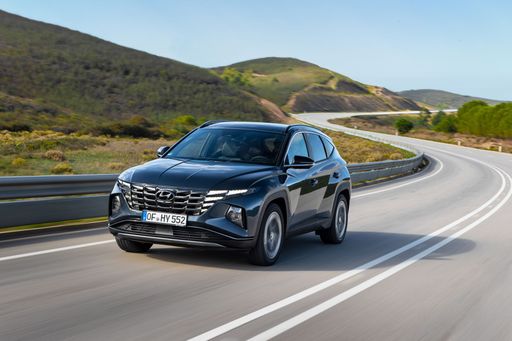 @ hyundai.news
@ hyundai.news
 @ hyundai.news
@ hyundai.news
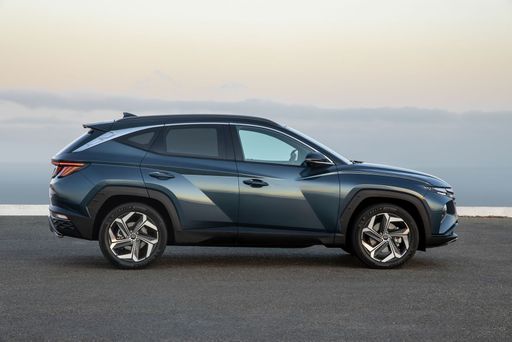 @ hyundai.news
@ hyundai.news
 @ hyundai.news
@ hyundai.news
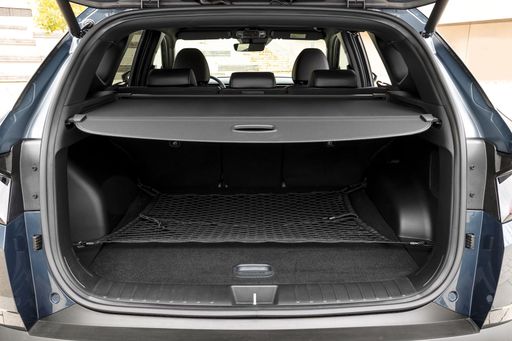 @ hyundai.news
@ hyundai.news
Renault Austral
Renault Austral er en imponerende tilføjelse til markedet for kompakte SUV'er, der kombinerer stilfuld design med fremragende komfort. Den tilbyder en rummelig kabine og avancerede teknologier, som gør kørslen både sikker og behagelig. Austral appellerer til bilister, der ønsker en alsidig og moderne køreoplevelse.
Detaljer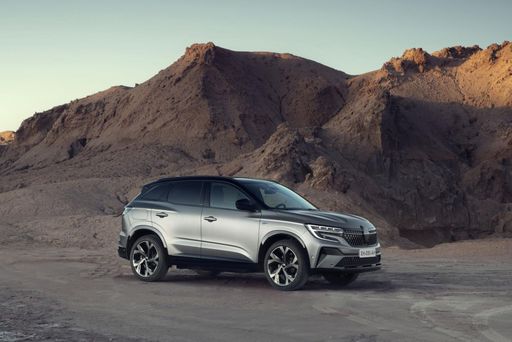 @ Renault
@ Renault
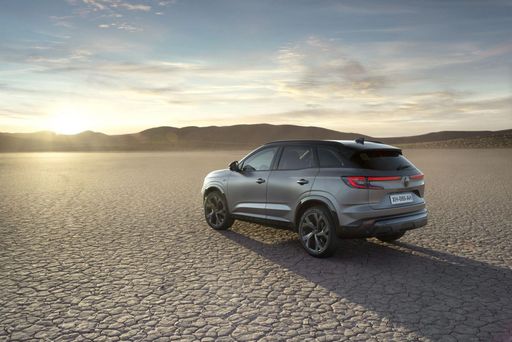 @ Renault
@ Renault
 @ Renault
@ Renault
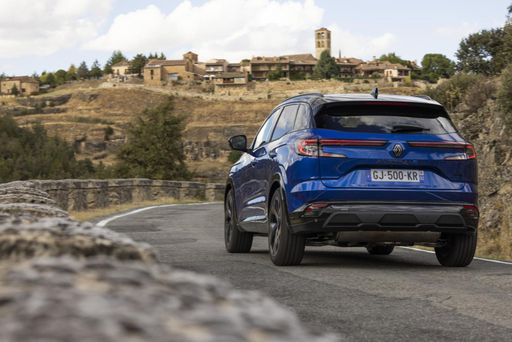 @ Renault
@ Renault
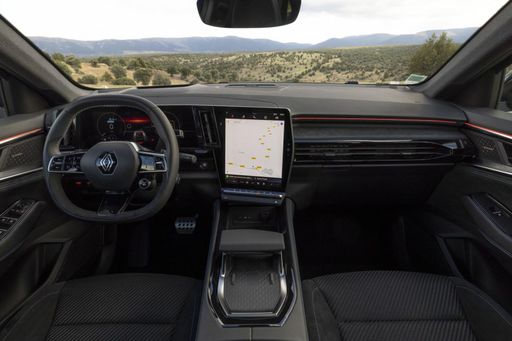 @ Renault
@ Renault
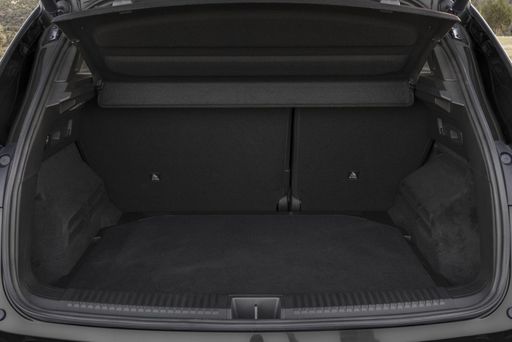 @ Renault
@ Renault

|

|
|
|
|
Omkostninger og forbrug |
|
|---|---|
|
Pris
280100 - 423500 dkr
|
Pris
271900 - 346000 dkr
|
|
Forbrug L/100km
1 - 6.9 L
|
Forbrug L/100km
4.8 - 6.5 L
|
|
Forbrug kWh/100km
-
|
Forbrug kWh/100km
-
|
|
Elektrisk rækkevidde
64 - 70 km
|
Elektrisk rækkevidde
-
|
|
Batterikapacitet
-
|
Batterikapacitet
-
|
|
co2
22 - 156 g/km
|
co2
109 - 148 g/km
|
|
Tankkapacitet
42 - 54 L
|
Tankkapacitet
55 L
|
Dimensioner og karrosseri |
|
|---|---|
|
Karrosseri
SUV
|
Karrosseri
SUV
|
|
Sæder
5
|
Sæder
5
|
|
Døre
5
|
Døre
5
|
|
Egenvægt
1520 - 1889 kg
|
Egenvægt
1539 - 1613 kg
|
|
Bagagerumskapacitet
546 - 620 L
|
Bagagerumskapacitet
527 - 555 L
|
|
Længde
4510 - 4520 mm
|
Længde
4533 mm
|
|
Bredde
1865 mm
|
Bredde
1825 mm
|
|
Højde
1650 mm
|
Højde
1645 mm
|
|
Maksimal bagagerumskapacitet
1721 - 1799 L
|
Maksimal bagagerumskapacitet
1736 - 1761 L
|
|
Lastkapacitet
525 - 545 kg
|
Lastkapacitet
464 - 477 kg
|
Motor og ydeevne |
|
|---|---|
|
Motortype
Diesel mild-hybrid, Benzin mild-hybrid, Benzin, Fuld hybrid, Plugin-hybrid
|
Motortype
Benzin mild-hybrid, Fuld hybrid
|
|
Transmission
Automatisk, Manuel
|
Transmission
Automatisk
|
|
Transmissionsdetaljer
Automatisk dobbeltkobling, Manuel gearkasse, Automatgearkasse
|
Transmissionsdetaljer
CVT, Automatgearkasse
|
|
Drivtype
Forhjulstræk, Firehjulstræk
|
Drivtype
Forhjulstræk
|
|
Effekt HK
136 - 252 HK
|
Effekt HK
158 - 200 HK
|
|
Acceleration 0-100 km/t
7.9 - 11.6 s
|
Acceleration 0-100 km/t
8.4 - 9.7 s
|
|
Maks. hastighed
180 - 194 km/h
|
Maks. hastighed
180 km/h
|
|
Moment
265 - 367 Nm
|
Moment
270 Nm
|
|
Antal cylindre
4
|
Antal cylindre
3 - 4
|
|
Effekt kW
100 - 185 kW
|
Effekt kW
116 - 147 kW
|
|
Motorstørrelse
1598 cm3
|
Motorstørrelse
1199 - 1332 cm3
|
Generelt |
|
|---|---|
|
Modelår
2024
|
Modelår
2025
|
|
CO2-effektivitetsklasse
E, F, D, B
|
CO2-effektivitetsklasse
E, C
|
|
Mærke
Hyundai
|
Mærke
Renault
|
Hvilke drivlinjer findes til Hyundai Tucson?
Tilgængelig som Forhjulstræk eller Firehjulstræk.
De viste priser og data er estimater baseret på tyske listepriser og kan variere fra land til land. Disse oplysninger er ikke juridisk bindende.
